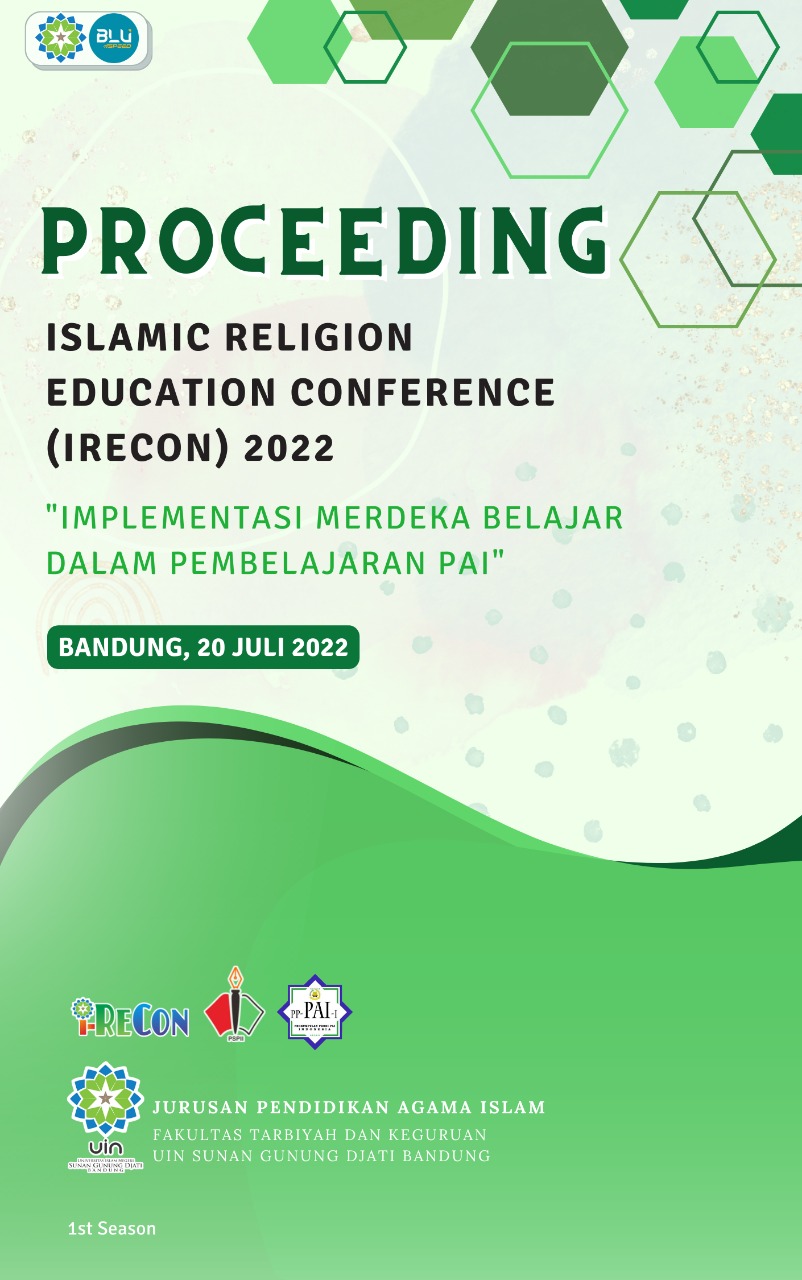Penerapan Metode Tilawati untuk Meningkatkan Kemampuan Membaca Al-Quran Peserta Didik
Abstract
This research is motivated by the problems found in learning to read the Qur'an for class VII students of SMP Plus Persis Tanjungsari, Sumedang Regency, that the ability to read the Qur'an of students has not reached the Minimum Completeness Criteria. This study aims to improve the ability to read the Qur'an through the Tilawati method in class VII students of SMP Plus Persis Tanjungsari, Sumedang Regency. The method used in this research is Classroom Action Research (CAR) which is carried out in three cycles. The subjects of this study were seventh grade students of SMP Plus Persis Tanjungsari which consisted of 13 male students and 8 female students. The method of data collection was done through test techniques, observation, interviews, and document studies. This action research was conducted in three cycles, each cycle consisting of: planning, action, observation and reflection. The results of this study indicate that the use of the tilawati method can improve the ability to read the Qur'an of class VII students of SMP Plus Persis Tanjungsari. This can be seen from the average score of students' learning to read the Qur'an in the pre-cycle, which is 61.7, then it increases in the first cycle by 67, in the second cycle by 72.8, and in the third cycle by 77,6. In addition, the percentage of students' learning mastery experienced an increase, namely in the pre-cycle by 23,8%, in the first cycle by 42,9%, in the second cycle by 61.9%, and in the third cycle by 81%.
Downloads
References
Abdul Chaer, H. (2013). Al-Quran dan Ilmu Tajwid. Rineka Cipta.
Anwar, D. (2002). Kamus Lengkap Bahasa Indonesia. Amelia.
Arifin, M. (2003). Filsafat Pendidikan Islam Edisi Revisi. Bumi Aksara.
Arikunto, S. (2010). Prosedur Penelitian Suatu Pendekatan dan Praktik. Jakarta: Rineka Cipta.
Arsyad, A., & Salahudin, S. (2018). Hubungan Kemampuan Membaca Al Qur’an Dan Minat Belajar Siswa Dengan Hasil Belajar Pendidikan Agama Islam (Pai). EDUKASI: Jurnal Penelitian Pendidikan Agama Dan Keagamaan, 16(2), 179–190. https://doi.org/10.32729/edukasi.v16i2.476
Daulay, M. R. (2014). STUDI PENDEKATAN ALQURAN Oleh: Muhammad Roihan Daulay. Jurnal Thariqah Ilmiah, 01(01), 31–45.
Mar’ati, R., & Chaer, M. T. (2017). Pengaruh Pembacaan dan Pemaknaan Ayat-ayat al-Qur’an terhadap Penurunan Kecemasan pada Santriwati. Psikohumaniora: Jurnal Penelitian Psikologi, 1(1), 30. https://doi.org/10.21580/pjpp.v1i1.966
Marki, J. M. (2021). Islam Keutamaan Membaca Al-Qur’an. Kementrian Agama Republik Indonesia. https://kemenag.go.id/read/keutamaan-membaca-al-qur-an-9n4na
Muaffa, A., Hasan, A., Arif, M., & Rouf, A. (2017). Starategi Pembelajaran Al-Qur’an Metode Tilawati Edisi Revisi Tahun 2017. Pesantren Al-Qur’an Nurul Falah.
McMillan, J. H. (2008). Educational Research: Fundamentals for the Consumer, 5th Edition. Boston: Pearson Education.
Munawwir, A. W. (2007). Kamus Al-Munawwir Indonesia-Arab. Pustaka Progresif.
Nasional, D. P. (2008). Kamus Besar Bahasa Indonesia. Gramedia Pustaka Utama.
Rauf, A. A. A. (2011). Pedoman Dauroh Al-Qur’an. Markaz Al-Qur’an.
Robbins, S. P. & T. A. J. (2011). Perilaku Organisasi Organizational Behavior. Salemba Empat.
Tarigan, H. G. (2008). Membaca Sebagai Suatu Keterampilan Berbahasa. Angkasa.
Thonthowi, A. (1993). Psikologi Pendidikan. Angkasa.




